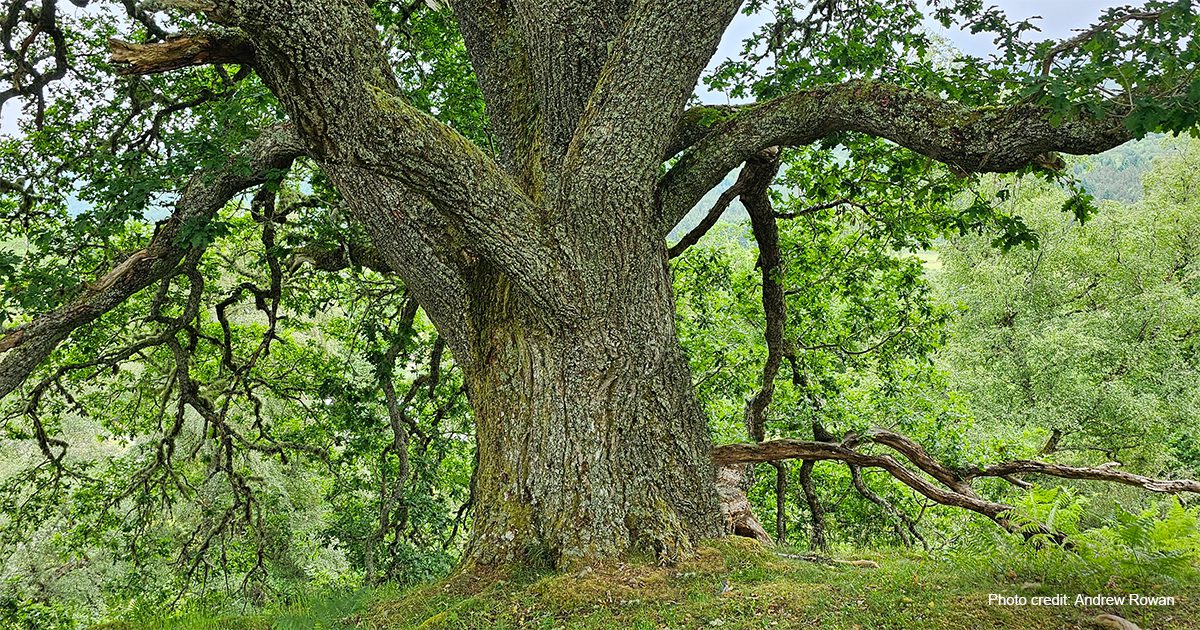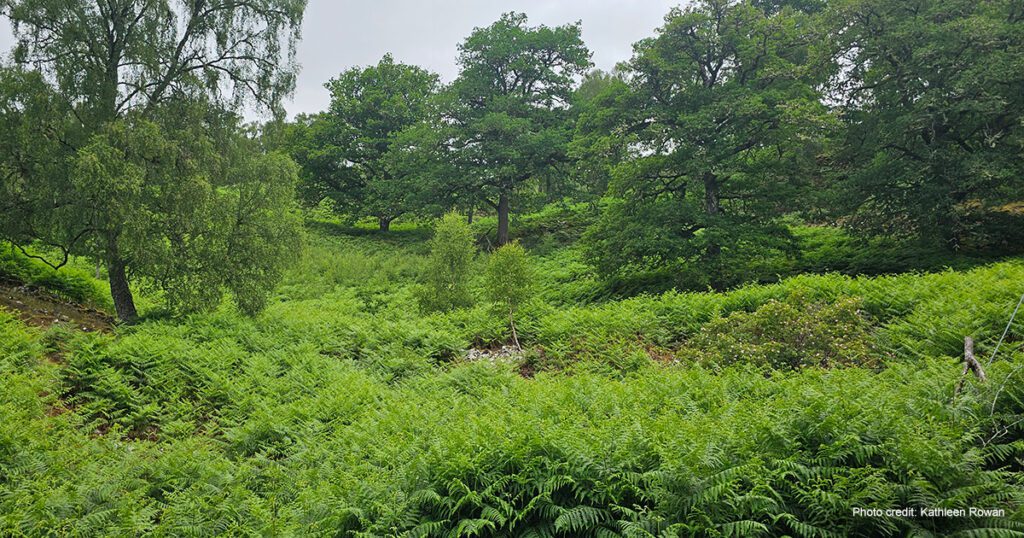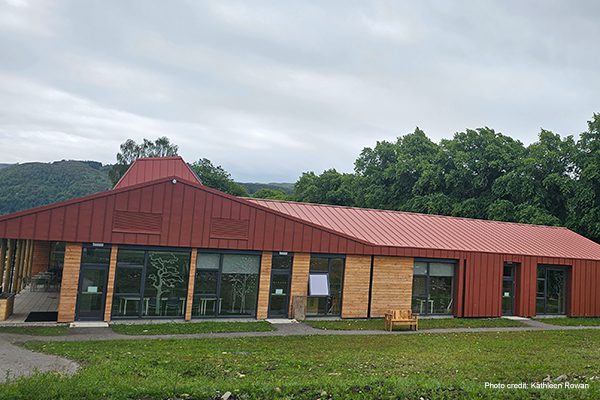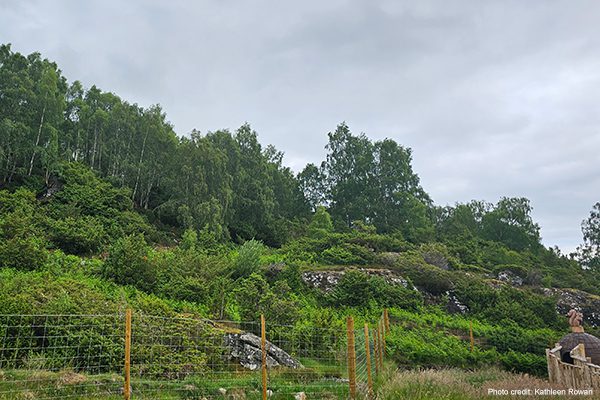
Aug 02, 2023 “To Love not Man the Less, but Nature More”
(Extract from Childe Harold’s Pilgrimage, G. Byron 1818, verse 178)
Lord Byron’s narrative poem, Childe Harold’s Pilgrimage, contains the line in the above title. The line captures the essence of the Rewilding concept. Rewilding is not about privileging Nature over humans but restoring Nature to vigorous health so that Nature’s bounty may continue supporting humans and wildlife.
Context
In May 2023, WellBeing International published an article, Rewilding: Letting Nature Do its Own Thing!, describing the concept of rewilding and its roots and its principles as developed by a working group of the International Union for the Conservation of Nature (IUCN). The IUCN principles included enhancing wildlife populations to restore food webs; identification of core rewilded areas and ways to connect them to ensure mutually beneficial outcomes for people and Nature; ensuring local engagement and community support; recovery of ecological processes; recognition that ecosystems are dynamic; rewilding needs to anticipate the effects of climate change and act as a tool to mitigate such effects; rewilding should be informed by science and should also consider local knowledge; rewilding must recognize the intrinsic value of all species; rewilding is adaptive and dependent on monitoring and feedback; and rewilding requires a paradigm shift in the coexistence of humans and Nature.
Controversy
Rewilding is a surprisingly controversial concept, perhaps because it is often perceived as a code term proposing the reintroduction of large predators (e.g., bears, wolves, and lynx). This is not an unreasonable perception. The original three C’s of rewilding covered the conservation of Core ecosystems, connecting those cores with Corridors allowing wildlife passage, and the return of large Carnivores to complete trophic food webs.
The debate over the EU Commission’s Nature Restoration Law passed in 2022, was particularly bitter. Environmental organizations and left-of-center parties supported the law’s passage. But farming and fishing interests were opposed, arguing that the law would compromise Europe’s ability to produce food and would negatively affect the livelihoods of farming and fishing families. However, the available scientific evidence directly contradicts the arguments promoted by critics, and thousands of European scientists signed an open letter during the political discussions supporting the Nature Restoration Law and supplying supportive citations. In addition, the European Commission has estimated that every euro spent on nature restoration generates €8 to €38 of economic return.
While the law will take time (and more negotiation) to implement, various European entities are already engaged in nature restoration (or rewilding) programs. WBI observes growing “Global Awareness” of the importance of resilient and healthy Nature. The recent heat waves are direct evidence of the deterioration of Nature, driving individuals to want to help with solutions. Appropriate actions lead to an individual “Feel Better” response when people change their behaviors to address what is happening to the world around them.
Rewilding Efforts
 The WellBeing Newsletter article describes Rewilding Europe, an NGO established in 2011 that aims to restore the health of iconic ecosystems across Europe. The organization grew slowly at first but has expanded rapidly in the last few years (annual income grew from around €2,000,000 in 2017 to €8,600,000 in 2022). A similar entity, Rewilding Britain, was established in the UK in 2014 and has also experienced healthy income growth. In Scotland, the NGO Trees for Life has embraced rewilding – especially the restoration of the Caledonian Forest that once covered large swathes of the Scottish Highlands – as a central focus of its mission. Trees for Life focuses on restoring the Caledonian Forest in Glen Affric and the surrounding highlands.
The WellBeing Newsletter article describes Rewilding Europe, an NGO established in 2011 that aims to restore the health of iconic ecosystems across Europe. The organization grew slowly at first but has expanded rapidly in the last few years (annual income grew from around €2,000,000 in 2017 to €8,600,000 in 2022). A similar entity, Rewilding Britain, was established in the UK in 2014 and has also experienced healthy income growth. In Scotland, the NGO Trees for Life has embraced rewilding – especially the restoration of the Caledonian Forest that once covered large swathes of the Scottish Highlands – as a central focus of its mission. Trees for Life focuses on restoring the Caledonian Forest in Glen Affric and the surrounding highlands.
 Rewilding Europe has recently added the Glen Affric project, located between Loch Ness and Kintail on the western coast of Scotland, to its list of rewilding ecosystems in 2021. The Dundreggan Rewilding Centre, located on the road between Loch Ness and the Isle of Skye, is a vital part of Glen Affric’s rewilding project. Trees for Life estimates that the Centre will generate around £1,500,000 annually to support a tree nursery and the associated tree replanting in the Affric highlands. The Centre will also provide public education on the benefits for people and animals of the project to rebuild the Caledonian pine and broadleaf forest in the Affric Highlands.
Rewilding Europe has recently added the Glen Affric project, located between Loch Ness and Kintail on the western coast of Scotland, to its list of rewilding ecosystems in 2021. The Dundreggan Rewilding Centre, located on the road between Loch Ness and the Isle of Skye, is a vital part of Glen Affric’s rewilding project. Trees for Life estimates that the Centre will generate around £1,500,000 annually to support a tree nursery and the associated tree replanting in the Affric highlands. The Centre will also provide public education on the benefits for people and animals of the project to rebuild the Caledonian pine and broadleaf forest in the Affric Highlands.
In a visit to the Dundreggan Rewilding Centre in July 2023, WellBeing International had an opportunity to learn firsthand about the challenges of replanting seedlings to restore the wooded ecosystems and the importance of specific grazing and rootling (e.g., wild boars ‘plow’ the undergrowth supplying opportunities for seedlings to sprout and take hold). An early sign of success is the return of a breeding pair of Golden Eagles to the Dundreggan estate in 2020, the first pair to breed successfully at the estate in forty years.
Final Comments
 But rewilding (or nature restoration) is a growing imperative for people and Nature. According to a 2019 report by the IPBES, globally, 75% of terrestrial and 66% of marine ecosystems are severely altered (and degraded) by human activity. Degraded marine ecosystems are restored by protecting core parts of the ecosystem or restoring a key element (e.g., sea-grass meadows) that allow depleted animal stocks to recover. 81% of protected habitats in the EU are poor or badly impaired; only a tiny fraction has improved in recent years. The Nature Restoration Law is the EU Commission’s proposal to address this challenge. Progress is possible. Our World in Data reports that Europe’s wild mammal populations have grown since the 1960s. Wolf, bison, chamois (a goat-antelope), and beaver populations have increased more than 10-fold in the past fifty years despite a 20% increase in the human population over the same period.
But rewilding (or nature restoration) is a growing imperative for people and Nature. According to a 2019 report by the IPBES, globally, 75% of terrestrial and 66% of marine ecosystems are severely altered (and degraded) by human activity. Degraded marine ecosystems are restored by protecting core parts of the ecosystem or restoring a key element (e.g., sea-grass meadows) that allow depleted animal stocks to recover. 81% of protected habitats in the EU are poor or badly impaired; only a tiny fraction has improved in recent years. The Nature Restoration Law is the EU Commission’s proposal to address this challenge. Progress is possible. Our World in Data reports that Europe’s wild mammal populations have grown since the 1960s. Wolf, bison, chamois (a goat-antelope), and beaver populations have increased more than 10-fold in the past fifty years despite a 20% increase in the human population over the same period.
Agriculture and marine fisheries rely heavily on the services provided by healthy and productive natural ecosystems. If the world hopes to feed its current and future human population, we must ensure that global ecosystems are healthy, resilient, and sustainable! Individual actions make a difference, especially when combined with coordinated international efforts.
“I alone cannot change the world, but I can cast a stone across the waters to create many ripples.” ~Mother Theresa
[Top photo: An old oak tree at Dundreggan Estate known as the Fairy Oak. The tree is estimated to be around 500 years old and probably served as a meeting place for the Gael’s (and the ‘wee folk’ or fairies?) who lived here hundreds of years ago. Oaks are very long-lived and frequently serve as major landmarks in a forest. A common saying is that an oak tree grows for 300 years, lives for 300 years and dies for 300 years. (Photo credit: Andrew Rowan)]


